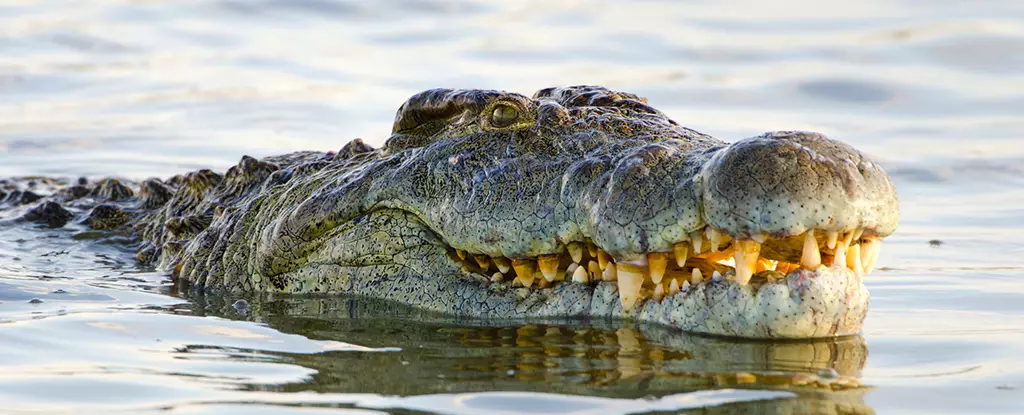The crocodile, a creature that has thrived on Earth for millions of years, possesses a unique charm many attribute to its unmistakable smile. However, this characteristic is more than just a mere anatomical quirk. Recent research has unveiled the intricate biological and mechanical processes that contribute to the formation of the crocodile’s distinct head scales, and understanding these processes can provide insights not only into the evolution of reptiles but also into the broader field of developmental biology.
The Mystery of Crocodilian Scales
The development of head scales in crocodiles presents an anomaly within the broader understanding of skin patterning in vertebrates. Traditional knowledge suggests that scales in reptiles arise from interactions at the cellular level, driven by genetic factors and influenced by specific skin structures called placodes. These structures are typically responsible for forming mammalian hairs, avian feathers, and the typical scales seen in many reptiles. However, the head scales of crocodiles are distinguished by their irregular polygonal shapes. This peculiarity led researchers at the Laboratory of Artificial and Natural Evolution (LANE) at the University of Geneva to conduct deeper investigations into the underlying mechanisms at play.
In a bid to understand how these scales are formed, researchers, led by biologist Michel Milinkovitch, turned to advanced imaging techniques and innovative experiments on crocodile embryos. Their findings prompted a reevaluation of how crocodilian scales differ from more conventional structures in other vertebrates.
Initially, the team hypothesized that the formation of crocodile head scales resulted from tensile stress—similar to the stretch marks humans experience during rapid growth phases. However, as their research progressed, they discovered that the truth was much more complex. The patterning of these scales, it turns out, is dictated by compressive mechanical instabilities rather than tensile forces.
In this process, an embryonic crocodile begins life with a smooth jaw. As it develops, the skin stretches and wrinkles, eventually connecting to form large, elongated irregular scales on the upper jaw, while smaller, polygon-shaped scales develop on the lower jaw. The team achieved fascinating insights by injecting Nile crocodile eggs with epidermal growth factor (EGF). This protein, which accelerates skin growth and increases its stiffness, resulted in embryos exhibiting a significantly enhanced patterning of their head scales.
The implications of this study extend beyond the realm of crocodile biology; they shed light on the potential reasons behind the diversity of head-scale patterns across different crocodilian species. The distinctiveness in scale architectures likely emerges from variations in embryonic skin growth influenced by evolutionary adaptations to their environments and lifestyles.
Additionally, the research cultivates a broader discussion about the interaction between mechanical forces and biological growth. It highlights that, unlike the experiences of human adolescents—whose bodies often cope with mismatched growth by creating stretch marks—the crocodilian skin grows at an accelerated pace. This phenomenon is responsible for the unique folding and pleating observed in their skin, creating head scales that are visually striking and evolutionarily advantageous.
Advancements in imaging and biological experimentation have provided unprecedented insight into the mechanics of embryonic development in these reptiles. By combining laboratory experiments with computer simulations, researchers have successfully painted a detailed picture of how the distinct characteristics of crocodile head scales arise. This crossover between theoretical and experimental science opens new avenues for further research, potentially revealing unknown aspects of reptilian development.
Moreover, such studies encourage interdisciplinary dialogue, sparking interest in fields ranging from genetics to materials science. Understanding the mechanics of scale development could inform biomimetic designs, contributing to innovations in materials engineering or even the medical field targeting tissue growth and repair.
The smile of a crocodile encapsulates a complex narrative of biological engineering that has evolved over millions of years. By examining the mechanical forces shaping their distinctive scales, we glean insights that not only inform our understanding of animal biology but also provide inspiration for broader scientific inquiry. Crocodiles are not merely ancient survivors; they are remarkable manifestations of nature’s ingenuity, reminding us that even the simplest features can reveal profound complexities waiting to be uncovered.

